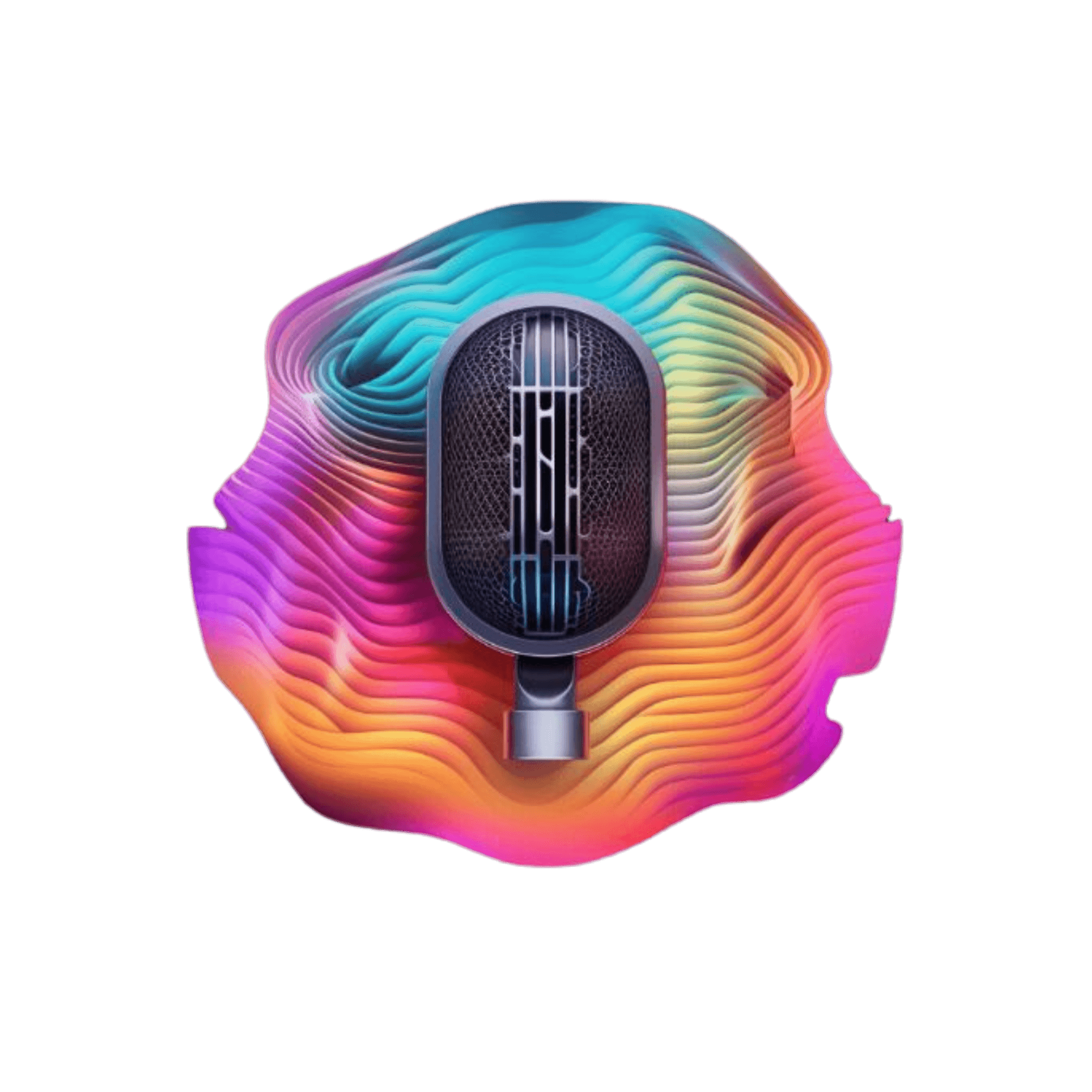
FROM OUR BLOG
FROM OUR BLOG
FROM OUR BLOG
How AI is Revolutionizing Music Video Production: From Concept to Final Cut
Jun 17, 2025



Music video production has evolved considerably since the days of its early days. The methodology, which was once dependent on creative directors, costly equipment, and hours of tedious edits, has changed remarkably with technology. Now, Artificial Intelligence (AI) takes the lead in making music video production quicker, easier, and more innovative than ever. From idea to final edit, AI is transforming the creation of music videos, giving artists, directors, and producers the freedom to explore new levels of creativity.
AI at the Early Stage of Music Video Creation
Making a music video starts with having a concept. Artists and directors in the old school sit down, usually inspired by the lyrics of the song, mood, and images they wish to evoke. Idea generation takes time, but with AI, it is now possible to speed up and make it more efficient.
AI platforms currently provide idea generation tools that help create concepts using the theme of the song. These tools scan the lyrics, music genre, and even artists' body of work to give suggestions for visual themes, color palettes, and mood boards. This is especially helpful for independent artists or small production units who might not be able to afford large creative teams. AI can give guidance and suggestions that kickstart the creative process while being time-saving.
Additionally, AI can aid in storyboarding, usually a long process of pre-production. AI programs may rapidly create visual storyboards from written descriptions or reference materials, helping directors visualize the music video before taking a single shot.
AI-Driven Filming and Scene Design
With the idea well-defined, it is time to shoot the music video. In the past, this phase would see meticulous planning in terms of camera placement, lighting, and angle to get the ideal shot. Today, AI can help in this too by maximizing camera angles, lighting placements, and even camera movement while shooting.
For instance, film assistants assisted by AI can automatically recommend the optimal camera shot and lighting configuration according to the emotional tone of the song. The audio is analyzed by the tools, identifying the rhythm, tempo, and key transitions, and the visuals are dynamically adjusted in real-time to align with the emotional tone. This brings together the music and visuals in complete synchronization, ensuring the video appears smooth and professional without the need for manual tweaking.
Moreover, AI can be used to improve the environment creation. Since AI technology has improved, more realistic and seamless virtual environments and backgrounds can be generated. Rather than depending on costly set designs, AI tools will be able to create engaging, visually appealing backgrounds that enhance the theme of the track. The generated environments not only save costs but also provide unlimited creativity, which enables artists to take their music to imaginary or surreal places with no restrictions.
The Magic of AI in Post-Production
The actual magic of AI in music video creation occurs in post-production. The conventional editing procedure took hours of fine-tuned effort to assemble the footage, do color grading, and sync the audio with the video. With AI, however, a lot of this painstaking effort is done automatically, accelerating the process of editing while enhancing precision.
One of the biggest breakthroughs in AI for video editing is its capacity to automatically sync video with music. Through analysis of the beat, tempo, and key transitions in the music, AI algorithms can edit the video in the rhythm of the music so that visual cuts, camera movements, and effects are perfectly in sync with the beat. This eliminates the process of manual syncing, which takes time and effort.
In addition, AI software can help with color grading so that the video has uniform tones and visual appeal. Using AI-based color grading, editors can efficiently obtain the desired mood. The AI platform can look at the visual tone of the video and use predefined filters or make changes to suit the artist's vision.
As an example, during post-production, most video editors can make use of invideo AI’s video translator, which immediately translates the lyrics or visual material for the global market. The software is able to instantly produce multilingual versions of music videos, making it easy to engage with global audiences. Such automation limits the time needed to engage with global fans, making it easy for artists to reach a wider audience faster.
Boosting Visual Effects with AI
Visual effects (VFX) have always been an integral part of music videos. From dreamlike sequences of a dream world to abstract animation, VFX can take a music video to new artistic levels. In the past, VFX used to be costly and demanded very skilled artists to produce the effects, but AI has made it easier.
AI software can create breathtaking visual effects in real-time, rendering simple shots into complex visuals without the necessity for intensive manual labor. With machine learning algorithms, AI can produce visual effects that are in sync with the beat, resulting in smooth transitions and stunning effects that go hand in hand with the rhythm and tempo of the song.
For instance, AI can create personalized animations or add sophisticated 3D effects to the shots. Those effects typically rely on input data from the creative team, for instance, pre-defined visual themes, colors, and motion dynamics. Such an approach provides a high level of personalization while also accelerating post-production.
Also, AI software can refine video quality, such as automatically eliminating flaws and enhancing resolution. This is particularly relevant while dealing with substandard footage or when upscaling videos for various platforms to ensure that the final output appears professional in all available formats.
AI-Powered Marketing and Distribution
After the music video is produced, it's time to market it. AI is also responsible in this phase. Based on audience data, AI software can determine which platforms and methods of distribution will be best for the video. Whether YouTube, social media, or streaming sites, AI can determine which platform will yield the most views from past trends and behavior patterns of the audience.
In addition, AI can be used to produce promotional materials. Through AI-enabled video applications, marketers are able to produce teaser clips, social media clips, and trailers in a matter of minutes that are optimized for various platforms. With these applications, effortless video editing is possible, inserting effects, captions, and transitions, making the promotional materials look just as refined as the music video itself.
AI can also be used to personalize the marketing of music videos through targeting certain demographics. According to data analysis, AI can produce targeted ad campaigns that target users most likely to interact with the content, making marketing efforts more efficient.
The Future of AI in Music Video Production
With the advancement of AI, its participation in the production of music videos will continue to increase. Future times may witness AI becoming even more part of the creative process so that artists and AI tools can collaborate in real time. From completely automated editing platforms to AI-created storylines, the scope of AI in music video production is enormous.
Producers and artists will be able to tap into new possibilities of creativity, testing the limits of what can be done in music video narrative. With advancements in AI technology, it will advance the production process even further, making it quicker, more efficient, and more available.
Conclusion
Artificial intelligence has transformed the process of music video production into a quicker, more efficient, and more creative process. From idea generation to the final edit, AI is changing the music video creation process, presenting new opportunities to improve visuals, streamline post-production, and reach global masses. Artists and directors can take their creative visions to new heights with AI-enabled applications like the AI video translator and video apps. The future of music video making is looking good, and AI will certainly remain an integral part of it.
Music video production has evolved considerably since the days of its early days. The methodology, which was once dependent on creative directors, costly equipment, and hours of tedious edits, has changed remarkably with technology. Now, Artificial Intelligence (AI) takes the lead in making music video production quicker, easier, and more innovative than ever. From idea to final edit, AI is transforming the creation of music videos, giving artists, directors, and producers the freedom to explore new levels of creativity.
AI at the Early Stage of Music Video Creation
Making a music video starts with having a concept. Artists and directors in the old school sit down, usually inspired by the lyrics of the song, mood, and images they wish to evoke. Idea generation takes time, but with AI, it is now possible to speed up and make it more efficient.
AI platforms currently provide idea generation tools that help create concepts using the theme of the song. These tools scan the lyrics, music genre, and even artists' body of work to give suggestions for visual themes, color palettes, and mood boards. This is especially helpful for independent artists or small production units who might not be able to afford large creative teams. AI can give guidance and suggestions that kickstart the creative process while being time-saving.
Additionally, AI can aid in storyboarding, usually a long process of pre-production. AI programs may rapidly create visual storyboards from written descriptions or reference materials, helping directors visualize the music video before taking a single shot.
AI-Driven Filming and Scene Design
With the idea well-defined, it is time to shoot the music video. In the past, this phase would see meticulous planning in terms of camera placement, lighting, and angle to get the ideal shot. Today, AI can help in this too by maximizing camera angles, lighting placements, and even camera movement while shooting.
For instance, film assistants assisted by AI can automatically recommend the optimal camera shot and lighting configuration according to the emotional tone of the song. The audio is analyzed by the tools, identifying the rhythm, tempo, and key transitions, and the visuals are dynamically adjusted in real-time to align with the emotional tone. This brings together the music and visuals in complete synchronization, ensuring the video appears smooth and professional without the need for manual tweaking.
Moreover, AI can be used to improve the environment creation. Since AI technology has improved, more realistic and seamless virtual environments and backgrounds can be generated. Rather than depending on costly set designs, AI tools will be able to create engaging, visually appealing backgrounds that enhance the theme of the track. The generated environments not only save costs but also provide unlimited creativity, which enables artists to take their music to imaginary or surreal places with no restrictions.
The Magic of AI in Post-Production
The actual magic of AI in music video creation occurs in post-production. The conventional editing procedure took hours of fine-tuned effort to assemble the footage, do color grading, and sync the audio with the video. With AI, however, a lot of this painstaking effort is done automatically, accelerating the process of editing while enhancing precision.
One of the biggest breakthroughs in AI for video editing is its capacity to automatically sync video with music. Through analysis of the beat, tempo, and key transitions in the music, AI algorithms can edit the video in the rhythm of the music so that visual cuts, camera movements, and effects are perfectly in sync with the beat. This eliminates the process of manual syncing, which takes time and effort.
In addition, AI software can help with color grading so that the video has uniform tones and visual appeal. Using AI-based color grading, editors can efficiently obtain the desired mood. The AI platform can look at the visual tone of the video and use predefined filters or make changes to suit the artist's vision.
As an example, during post-production, most video editors can make use of invideo AI’s video translator, which immediately translates the lyrics or visual material for the global market. The software is able to instantly produce multilingual versions of music videos, making it easy to engage with global audiences. Such automation limits the time needed to engage with global fans, making it easy for artists to reach a wider audience faster.
Boosting Visual Effects with AI
Visual effects (VFX) have always been an integral part of music videos. From dreamlike sequences of a dream world to abstract animation, VFX can take a music video to new artistic levels. In the past, VFX used to be costly and demanded very skilled artists to produce the effects, but AI has made it easier.
AI software can create breathtaking visual effects in real-time, rendering simple shots into complex visuals without the necessity for intensive manual labor. With machine learning algorithms, AI can produce visual effects that are in sync with the beat, resulting in smooth transitions and stunning effects that go hand in hand with the rhythm and tempo of the song.
For instance, AI can create personalized animations or add sophisticated 3D effects to the shots. Those effects typically rely on input data from the creative team, for instance, pre-defined visual themes, colors, and motion dynamics. Such an approach provides a high level of personalization while also accelerating post-production.
Also, AI software can refine video quality, such as automatically eliminating flaws and enhancing resolution. This is particularly relevant while dealing with substandard footage or when upscaling videos for various platforms to ensure that the final output appears professional in all available formats.
AI-Powered Marketing and Distribution
After the music video is produced, it's time to market it. AI is also responsible in this phase. Based on audience data, AI software can determine which platforms and methods of distribution will be best for the video. Whether YouTube, social media, or streaming sites, AI can determine which platform will yield the most views from past trends and behavior patterns of the audience.
In addition, AI can be used to produce promotional materials. Through AI-enabled video applications, marketers are able to produce teaser clips, social media clips, and trailers in a matter of minutes that are optimized for various platforms. With these applications, effortless video editing is possible, inserting effects, captions, and transitions, making the promotional materials look just as refined as the music video itself.
AI can also be used to personalize the marketing of music videos through targeting certain demographics. According to data analysis, AI can produce targeted ad campaigns that target users most likely to interact with the content, making marketing efforts more efficient.
The Future of AI in Music Video Production
With the advancement of AI, its participation in the production of music videos will continue to increase. Future times may witness AI becoming even more part of the creative process so that artists and AI tools can collaborate in real time. From completely automated editing platforms to AI-created storylines, the scope of AI in music video production is enormous.
Producers and artists will be able to tap into new possibilities of creativity, testing the limits of what can be done in music video narrative. With advancements in AI technology, it will advance the production process even further, making it quicker, more efficient, and more available.
Conclusion
Artificial intelligence has transformed the process of music video production into a quicker, more efficient, and more creative process. From idea generation to the final edit, AI is changing the music video creation process, presenting new opportunities to improve visuals, streamline post-production, and reach global masses. Artists and directors can take their creative visions to new heights with AI-enabled applications like the AI video translator and video apps. The future of music video making is looking good, and AI will certainly remain an integral part of it.
More Update




